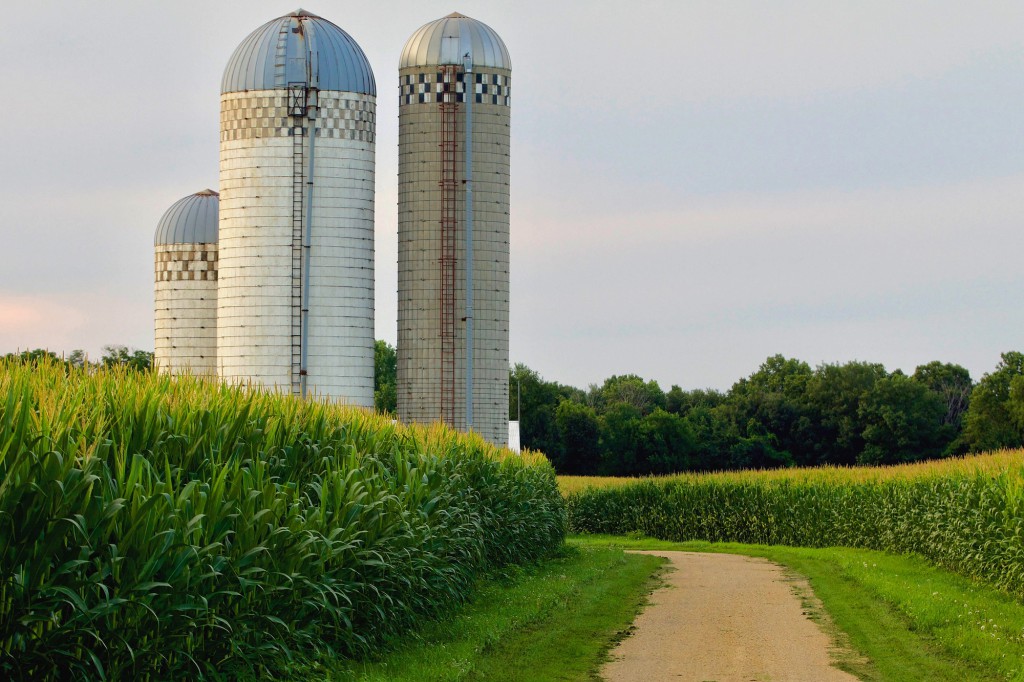YEAR-ROUND FORAGE THROUGH PRESERVATION
Raj Kumar, Rubina Gill, Bheru Lal Kumhar and Seema Jat, Dayanand College, Ajmer and Sri Karan Narendra Agriculture University, Jobner
The basic function of silage making is to store and preserve feed for later use with minimal loss of nutritional qualities. Silage can be called the fermented product of green forages where the acids produced by anaerobic fermentation of the sugars present in these forage. Silage making can be extended to a great variety of forage crops (maize, sorghum, immature cereal grains, etc.) and locally available agro-industrial by-products (sugar beet pulp, brewers grain, etc.). Silage making has become an important tool for producers to manage crop production and dairy herd feeding programs around the world. However, silage making requires considerable capital and labour investments on the farm; it also demands a fairly high level of technical expertise. As silage making allows storage and preservation of feed resources for months, if not years, producers can focus on two separate objectives: 1) To maximize yield of digestible nutrients (energy, protein, etc.) per hectare of land; 2) to maximize milk production per cow throughout the year.
Advantages of silage making

Silage making has some distinct advantages compared to hay-making:
- Silage is produced in both cold and cloudy weather;
- It is less at risk from the weather than haymaking;
- Improvement of the producer’s control over cutting dates and optimal stage of maturity at harvest;
- Minimization of loss of leaves and other small plant parts of high quality in the field;
- Storage of non-forage feeds that cannot be preserved as hay, such as agro-industrial by-products;
- Plants can be harvested at optimal phase of development and are efficiently used by livestock;
- Reduction of nutrient loses (below 10%) which in hay may amount to 30% of the dry matter;
- More economical use of plants with high yield of green mass;
- Better use of the land with 2-3 crops annually;
- Requires 10 times less storage space compared to hay;
- The fermentation in silage reduces harmful nitrates accumulated in plants during droughts and in over-fertilized crops;
- Silage preserves 85 percent of feed energy.
- 2 kg of silage (70% moisture) has the equal nutritive value of 1 kg of hay.
Limitations of silage making
- Silage making requires high capital investment. Harvesters are needed to chop the forage, tractors or other heavy equipment are used to pack the silage, storage facilities (silo structures) may be expensive, and additional equipment may be required to remove silage from a silo;
- The management of silos is sometimes difficult on the farm because once a silo is opened, silage should be removed on a daily basis (to minimize loss of nutritive value);
- Adjusting the number of silos and their dimension to the expected feed out rate for a given herd size is difficult. Usually, only large herds can afford to feed out of different silos of varying forage qualities for different groups of animals on the farm (heifers, dry cows, lactating cows, etc.);
- Once silage is removed from a silo, it becomes unstable (because of exposure to oxygen) and tends to spoil within a day or two;
- Silage cannot be marketed easily (difficult to transport long distances);
- Loss of nutrients during storage in a silo is unavoidable and may be high if the silage is not prepared properly.
Suitable forage crops to be preserved as silage
The chemical composition of a forage crop or agro-industrial by-product plays an important role in determining the ease with which lactic acid fermentation can take place. It is easier to ensile forages that have: a high level of fermentable sugar; a low level of protein; a low buffering capacity; ideal dry matter content at ensiling time. Corn is preserved as silage more easily than grasses or alfalfa because of its high sugar content, low protein content and low buffering capacity. In contrast, alfalfa is more difficult to ensile well because of its low sugar content and high buffering capacity, which is due in part to its high protein content (Table).
Table: Chemical composition and buffering capacity of typical forage crops
| Crops | Water solublecarbohydrate(g/kg DM) | Crude protein(% DM) | Bufferingcapacity(mEq/kg | “Aptitude” forsilagepreservation |
| Corn | 80-300 | 80-100 | 150-300 | High |
| Grasses | 35-300 | 100-160 | 250-550 | Intermediate |
| Alfalfa | 20-150 | 140-200 | 350-650 | Low |
Stage of growth
Crops should be cut at a proper stage of maturity as it is the most important factor for controlling the silage quality. The appropriate stage of growth for cutting different fodder crops for silage making is Sorghum – Flowering to dough stage; Maize – Milk to dough stage; Oat – 50% flowering to dough stage; Grasses – Early flowering stage
The “ideal” dry matter content
The “ideal” dry matter content of the forage depends on the type of silo. The recommended levels of dry matter in forages at ensiling are 30 to 40% for bunker silos; 35 to 50% for tower silos; 40 to 50% for wrapped round bales. Often, wilting green forage for 24–48 hours to increase dry matter is highly desirable, because wilted silage requires less lactic acid production and will stabilize at a higher pH level than silage that has a lower dry matter content. This is the case because higher dry matter content increases the concentration of soluble dry matter in the silage, and the resulting increase in osmotic pressure inhibits bacterial growth. Fermentation stops in wilted silage because of the high acidity, high osmotic pressure combination (rather than high acidity alone in silage with lower dry matter content). Thus wilting has a “sparing” effect on the level of sugar and the level of fermentation needed to stabilize the silage. As a result, wilting is particularly important when the ensiled forage is a legume, which has a relatively low level of fermentable sugars as compared to grass or corn.
Additives for effective ensiling of nutrients
Various types of additives can be used to improve or inhibit the fermentation or supplement nutrients needed by ruminants to be fed as silage. Propionic acid, formaldehyde, etc. have been used to increase the rate of lactic acid fermentation and produce stable silage. Carbohydrate sources such as molasses, whey, yeast and other energy-rich ingredients have also been used as additives to increase the fermentation and feeding value of silage. Common additives are as follows:
- Molasses: Legumes and certain grasses are rather low in sugar content. Adding molasses improves the quality of silage by increasing lactic and acetic acid production. It also increases the palatability and nutritive value of the silage. Molasses may be added (3.0 to 4.0 per cent of the green weight of the forage) in either liquid or dehydrated form. Molasses and starches when added in the form of grains supply the silage bacteria with ample food so that fermentation proceeds normally.
- Urea: Adding urea at a level of 0.5 per cent of fresh forages is recommended. The idea of adding urea is to enrich the silage with nitrogen as cereal forages are mostly deficient in this element.
- Limestone: This is calcium carbonate and may be added at a level of 0.5 to 1.0 per cent to maize silage to increase acid production. It neutralizes some of the initial acids as they are formed allowing the lactic acid bacteria to perform longer and to produce more desirable acids. Sodium metabisulphite: Sulphur dioxide (SO2) is a very good antibacterial preservative. It also improves carotene content.
- Organic acids: Propionic and formic acids are used for enhancing preservation of forages without the loss of palatability. These are costly and when added, the following guidelines may be observed: Add 1 per cent propionic acid to the forage in the field at the time of harvest or at the chopper. Limit the presence of oxygen by using a sound, well-built silo. Prevent dilution of organic acid treated silage by rain and cover it with plastic when it is stored outside.
Silos
The different types of silos generally used are: pit silo, tower silo, trench silo, bunker silo, clamp silo, plastic silo and silage bag. The silo must provide a solid surface to permit consolidation of the ensiled material and elimination of air. It must protect the silage from water.
Chopping
Crop should be chopped before ensiling. For good silage, the shorter the chop length, the better the quality. Chopped silage is more palatable to livestock and has little chance of secondary fermentation.
Filling of silo
Silo should be filled rapidly and should not be left open. It should be sealed as soon as possible. Packing is important to create anaerobic conditions. It should be thoroughly pressed so that no air pocket is left in the silo otherwise mold will form and spoil the silage. After filling, silo should be covered with polythene sheet followed by that of a layer of soil, etc.
Removal of silage
After 45 days of ensilage, the silage can be removed to feed to animals. Silage should not be allowed to deteriorate after the silo is opened for feeding. Covers should be kept firmly in place as long as possible and the minimum face should be exposed at one time.
Silage quality
A good-quality silage should have the following characteristics: (i) pH 3.8-4.2 (ii) ammonical nitrogen of total N – less than 10% of total N, (iii) butyric acid- less than 0.2%, (iv) lactic acid -8 to 12% of dry matter. For desirable fermentation, the forage should be rich in water soluble sugar (more than 5% on dry-matter basis).












